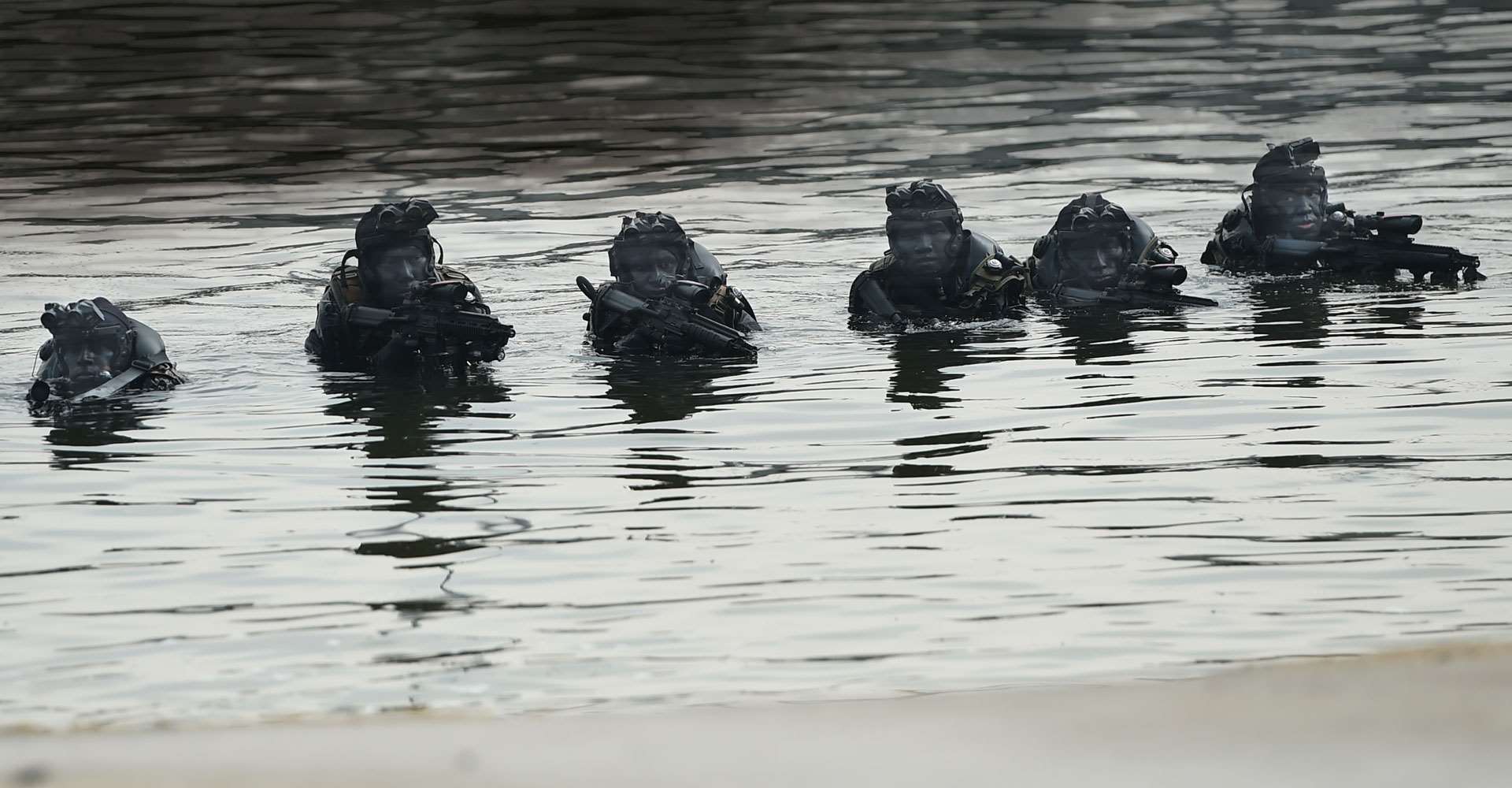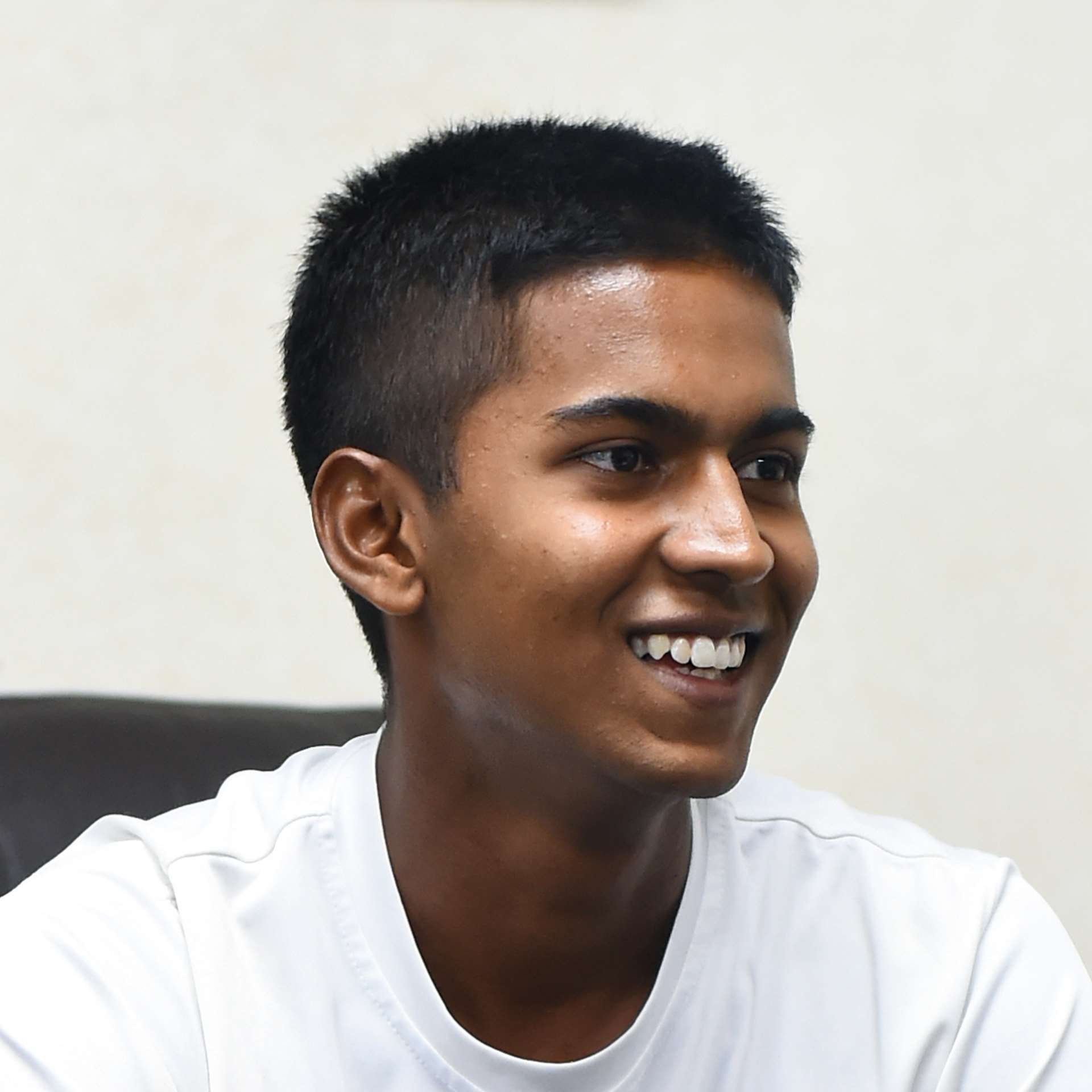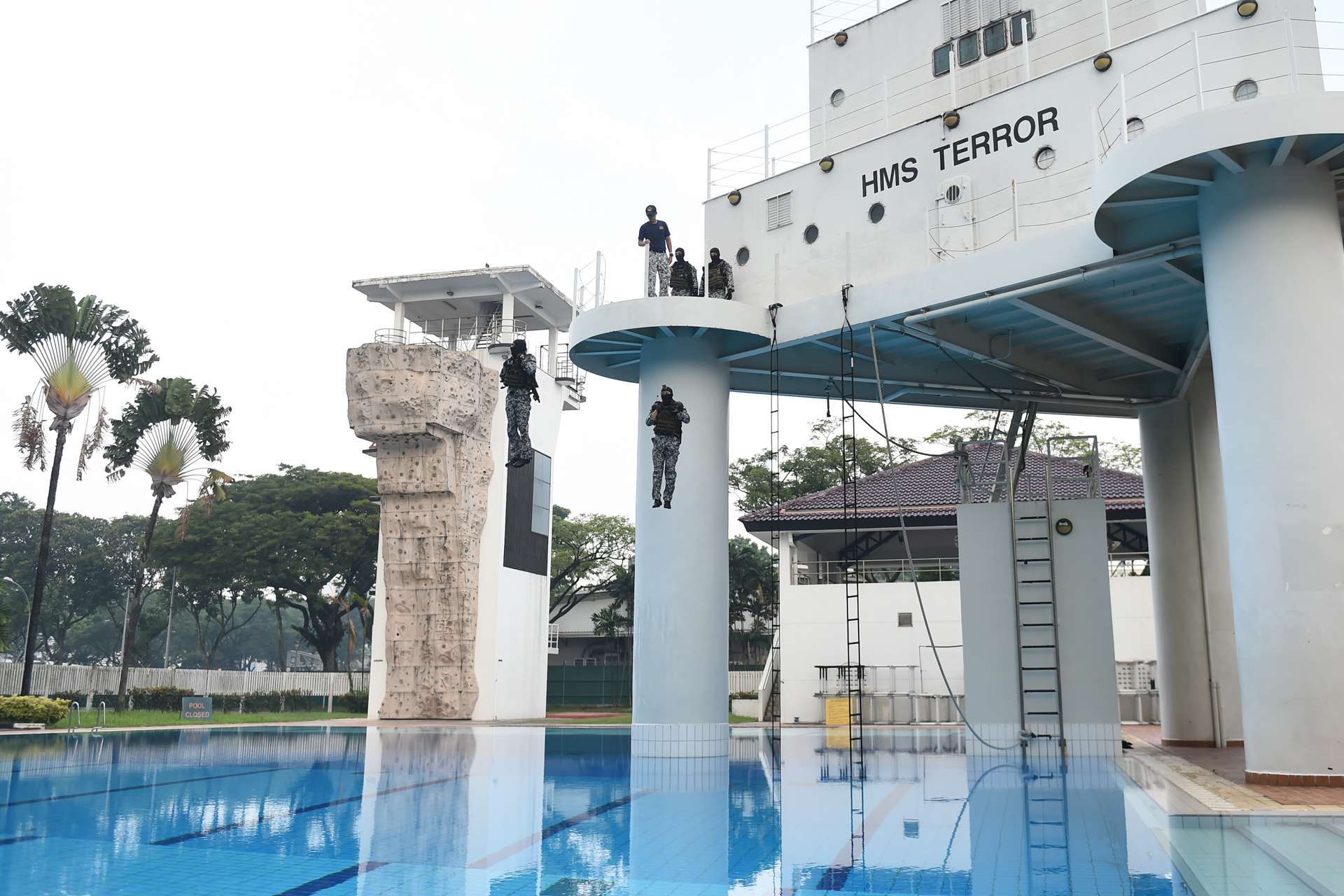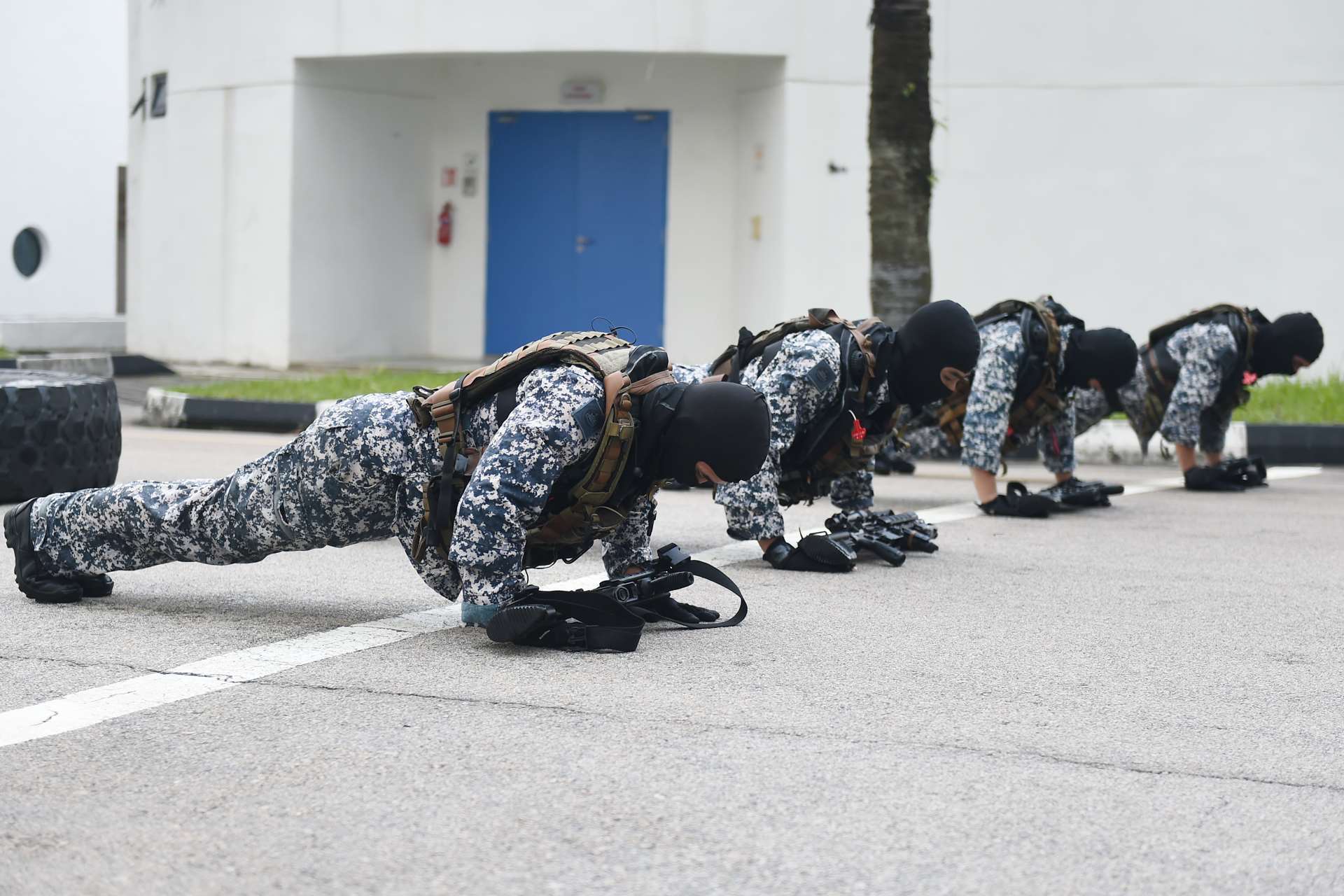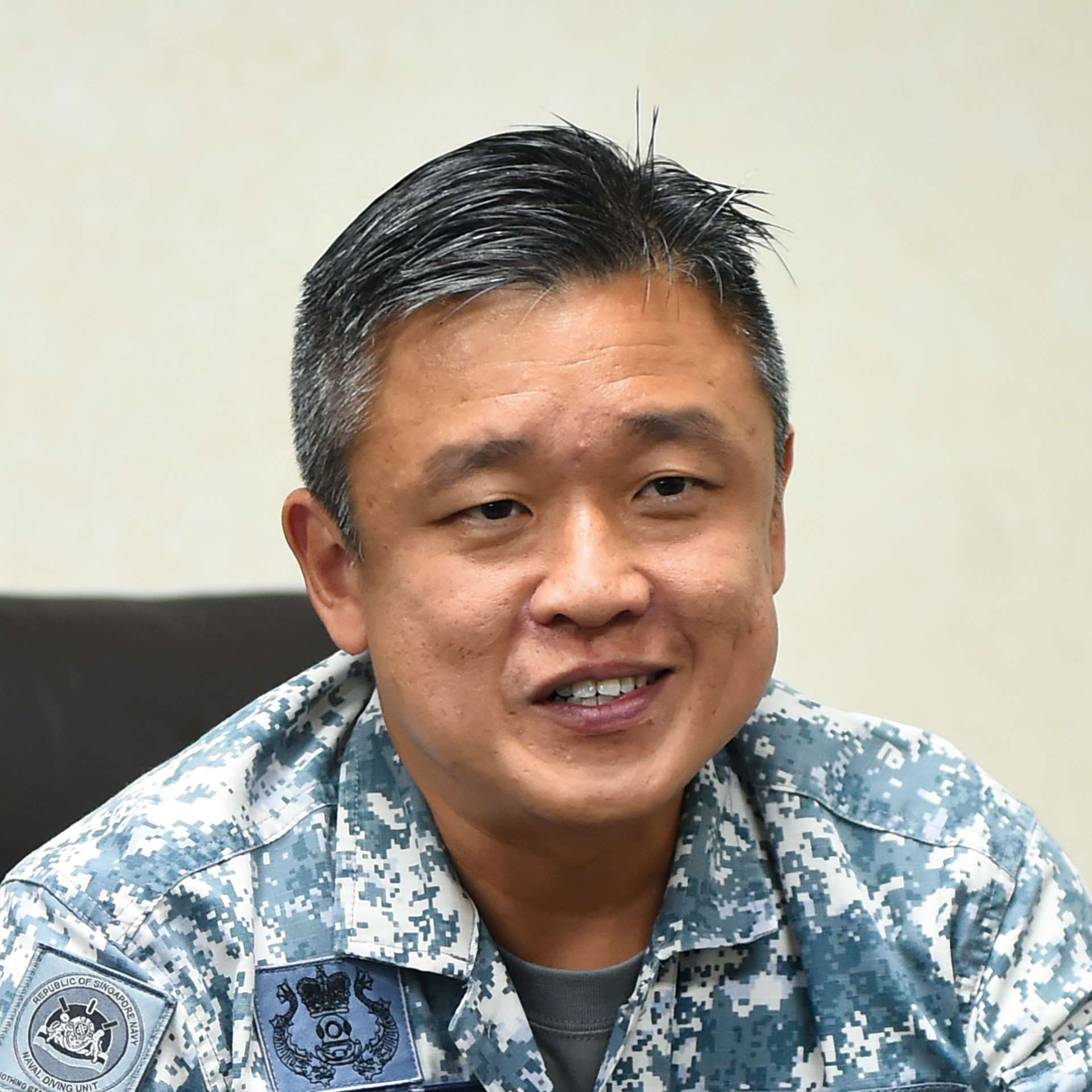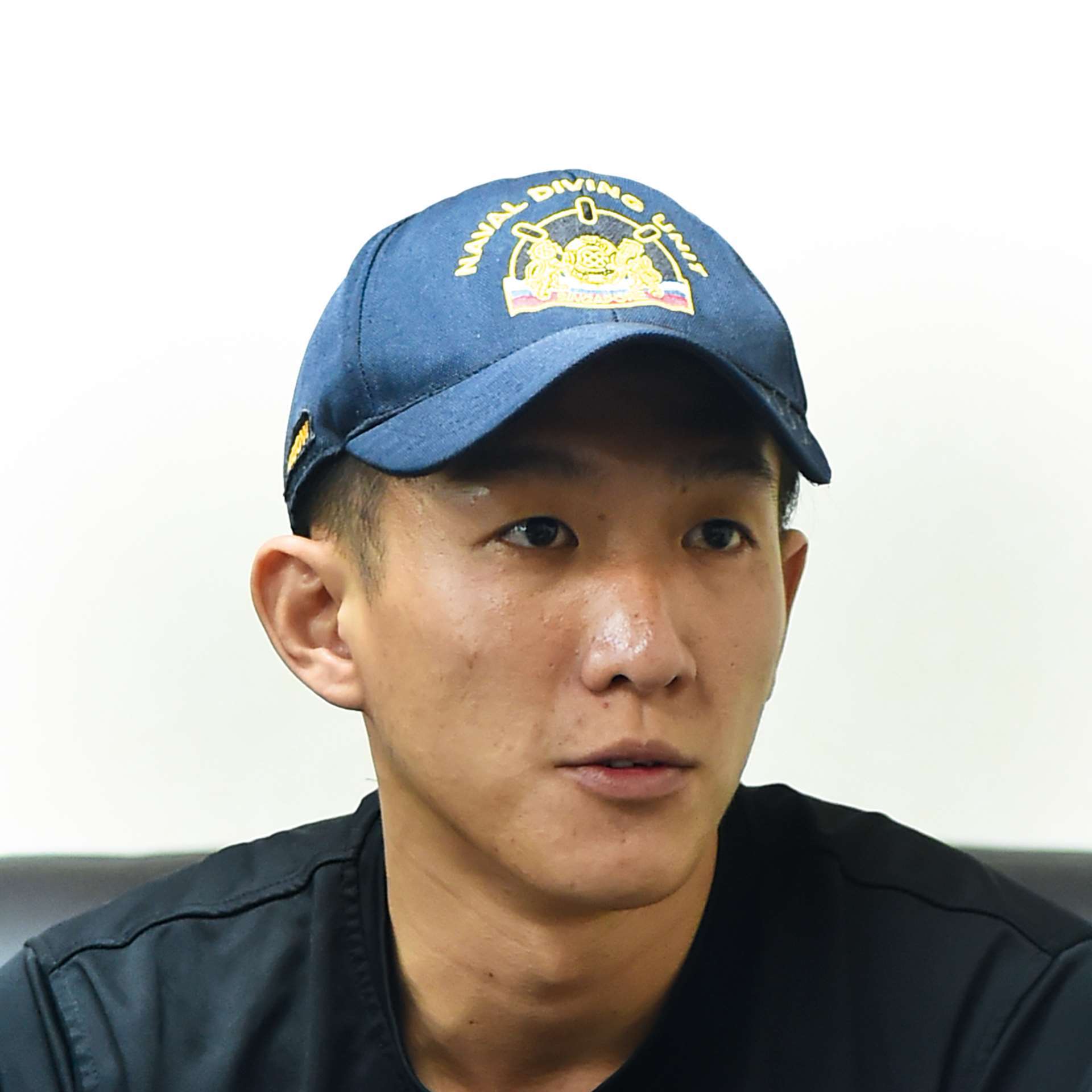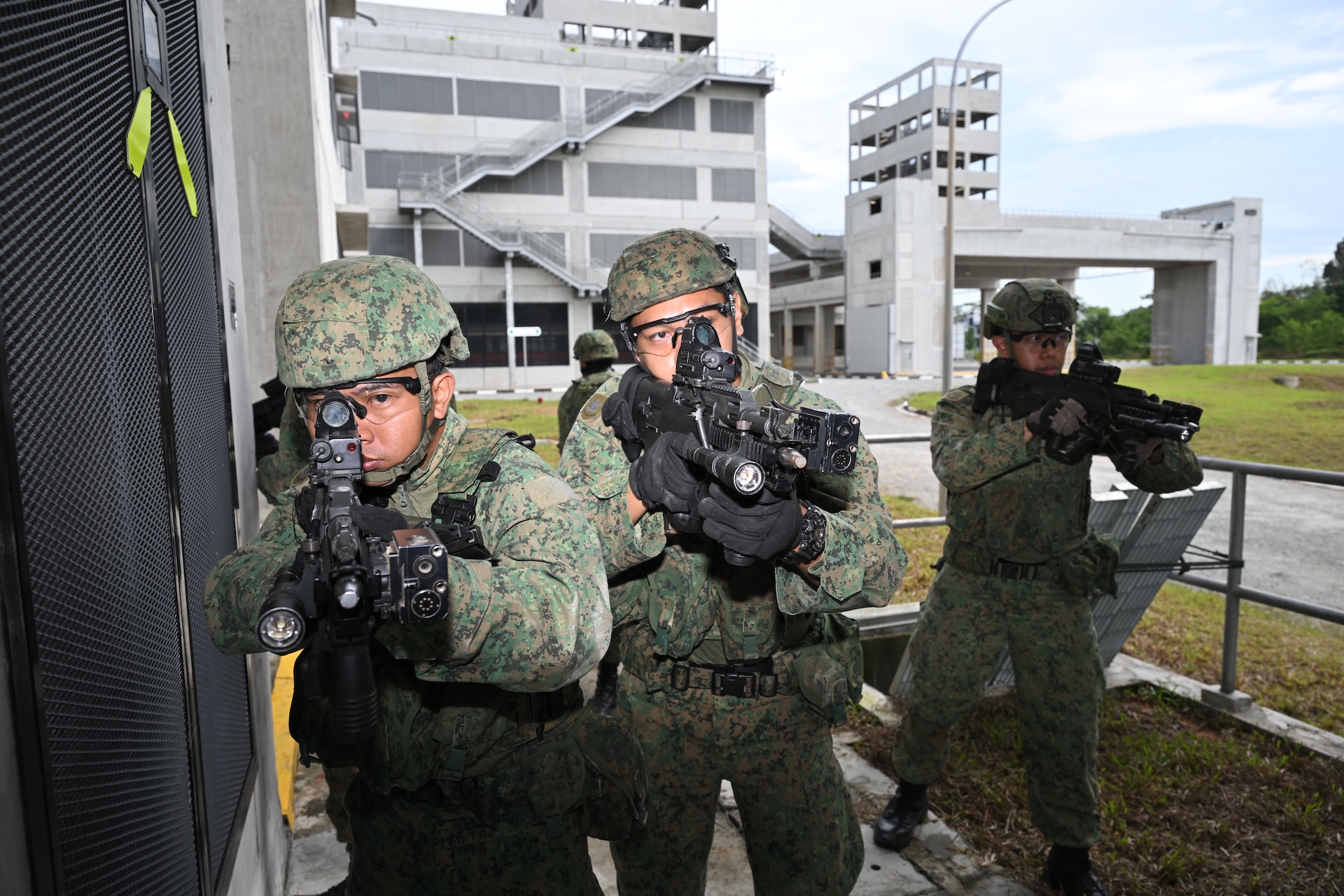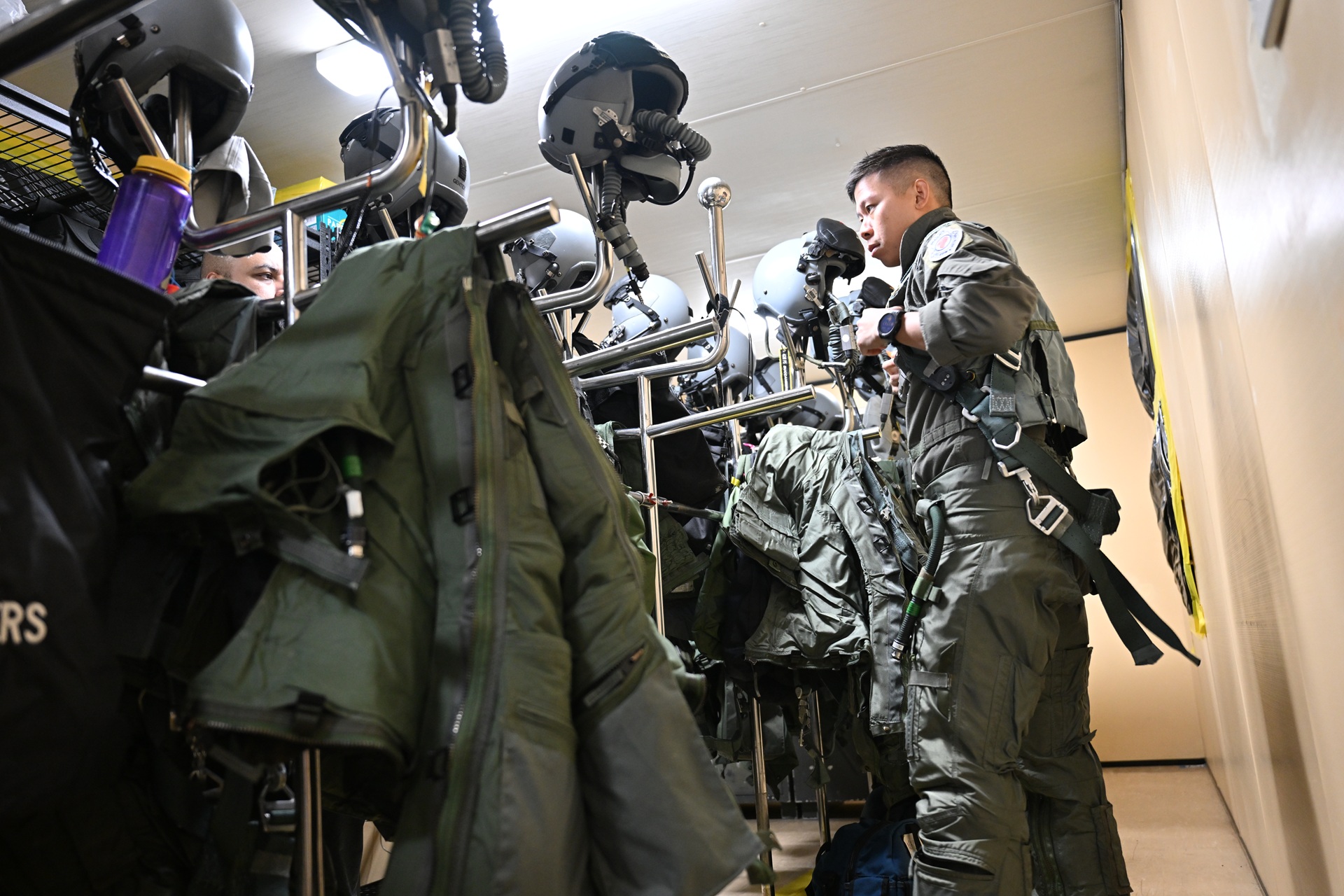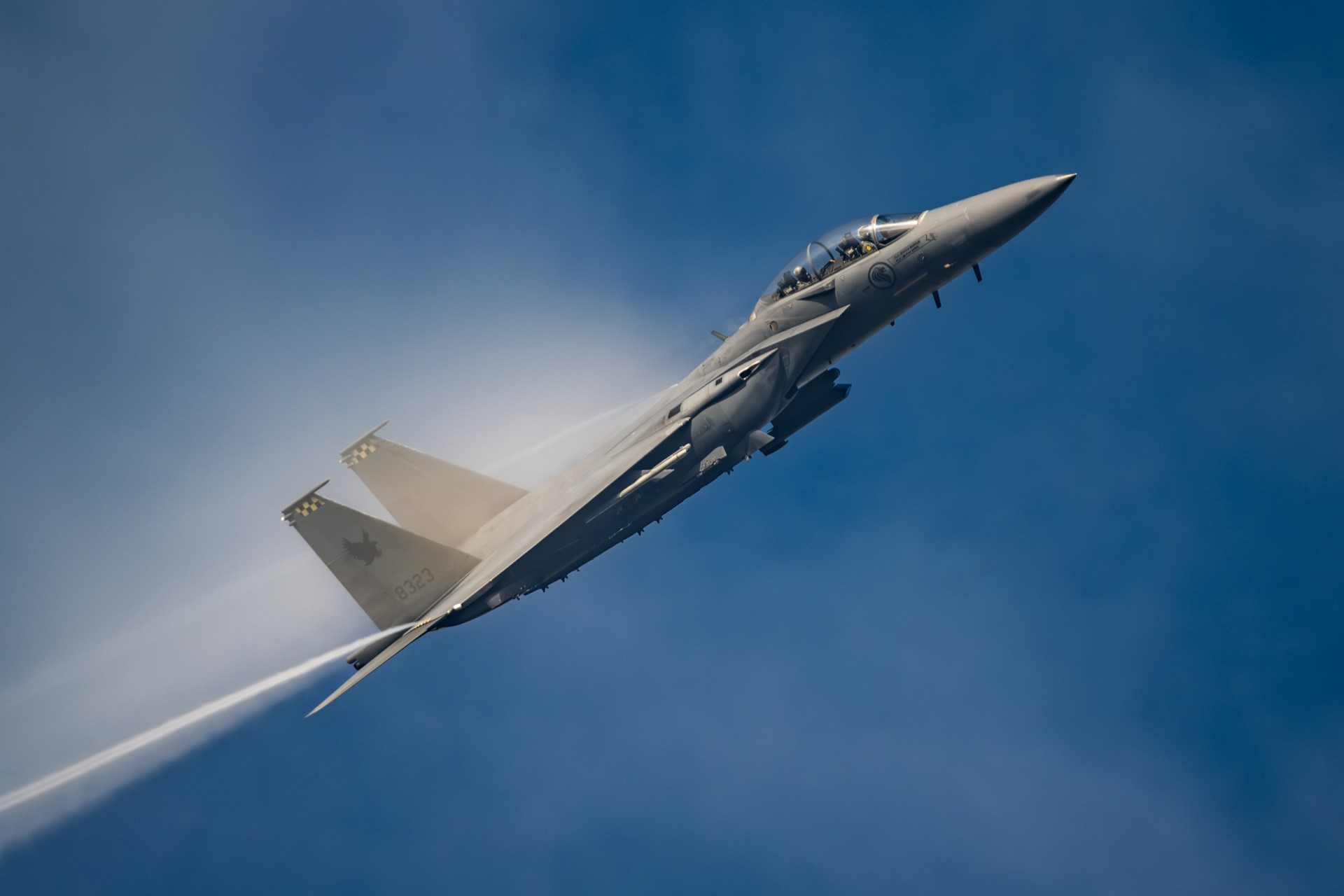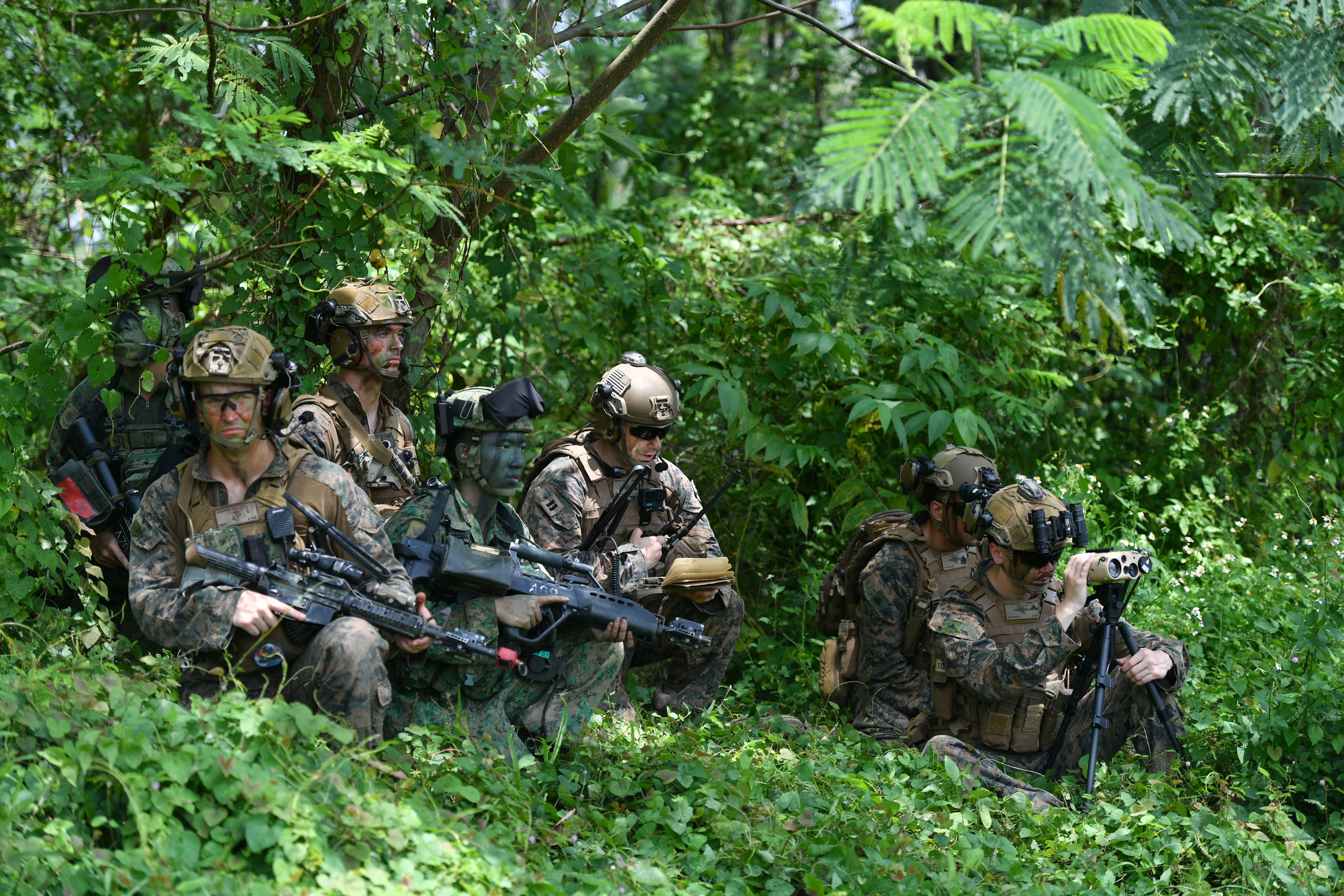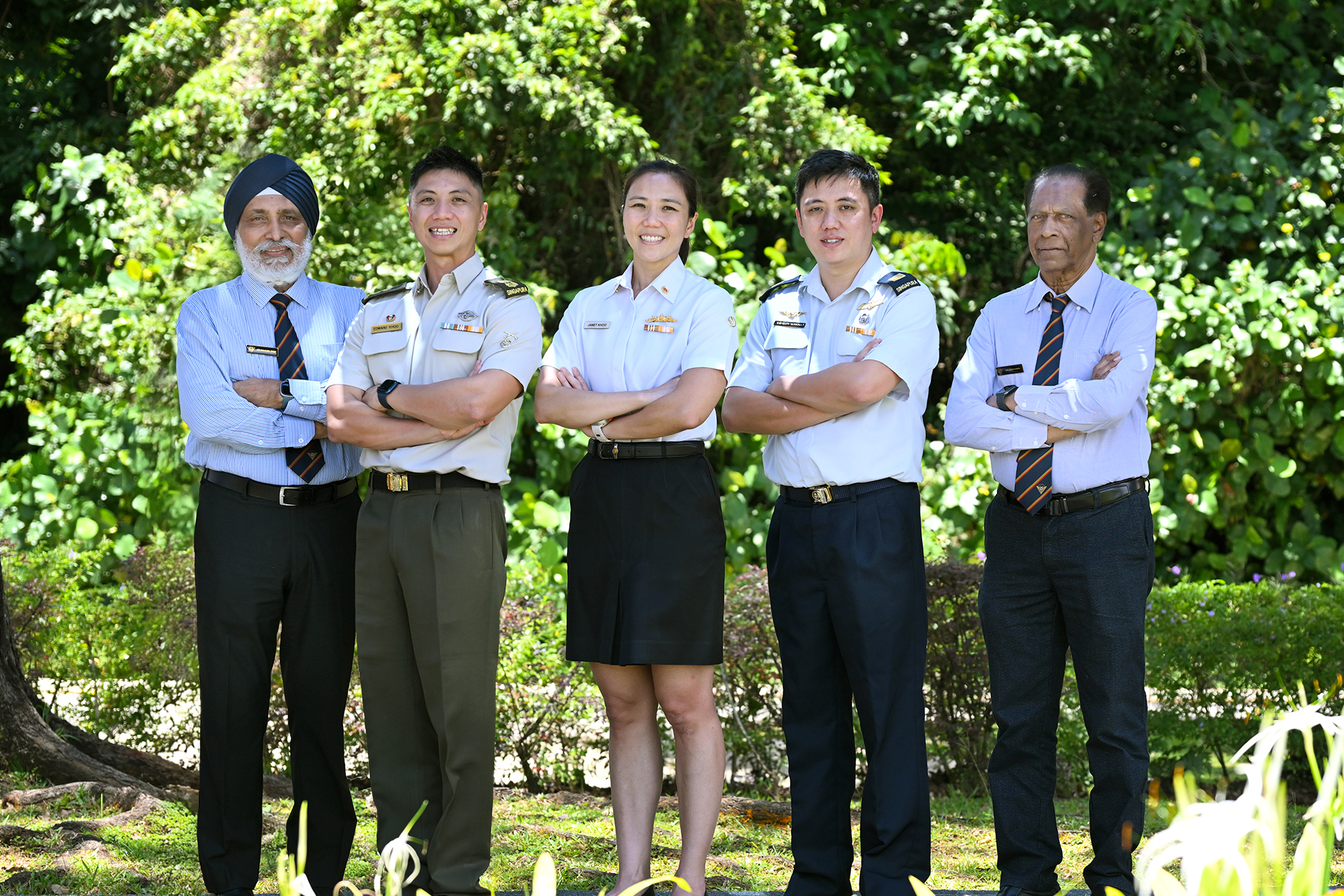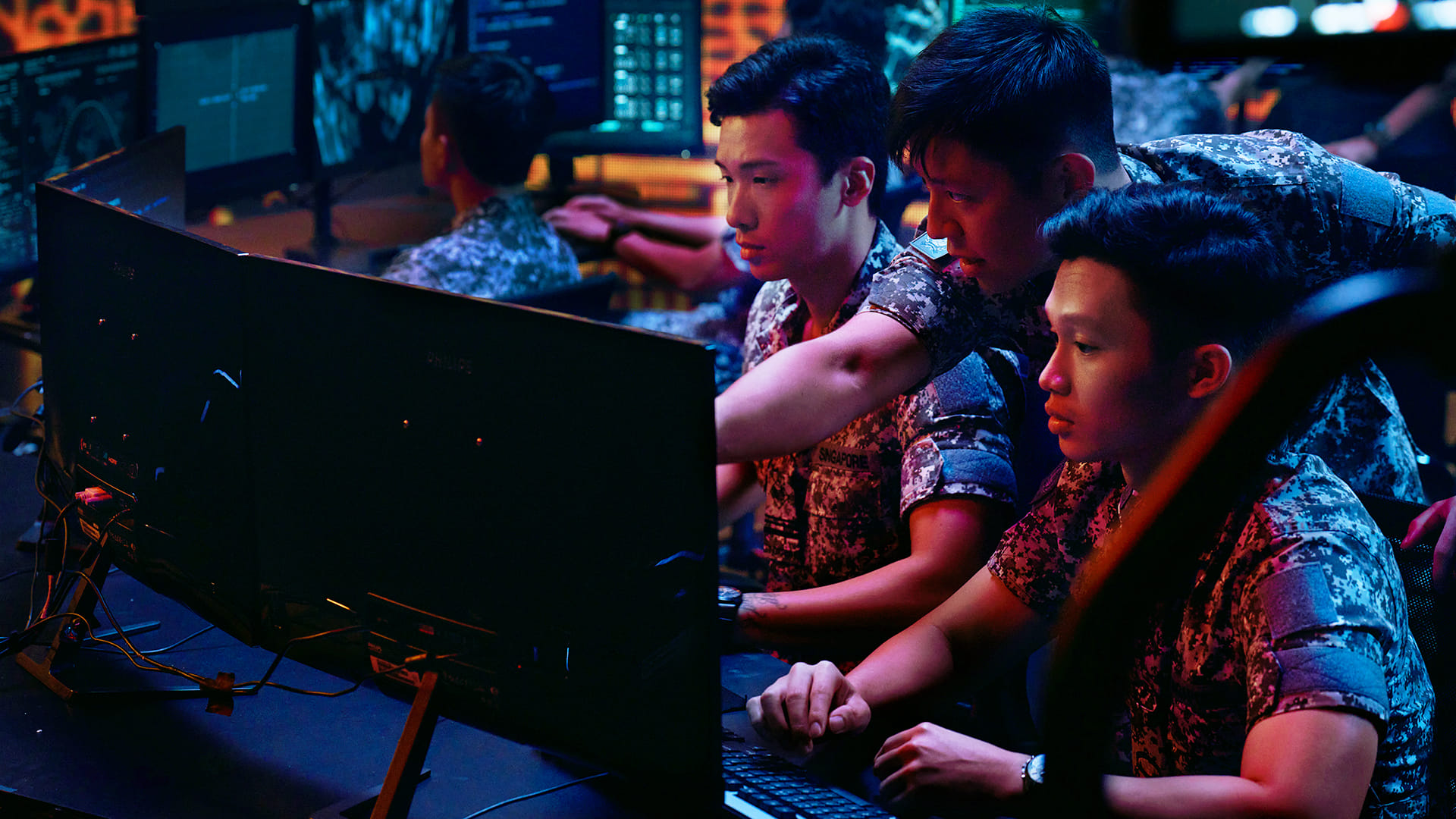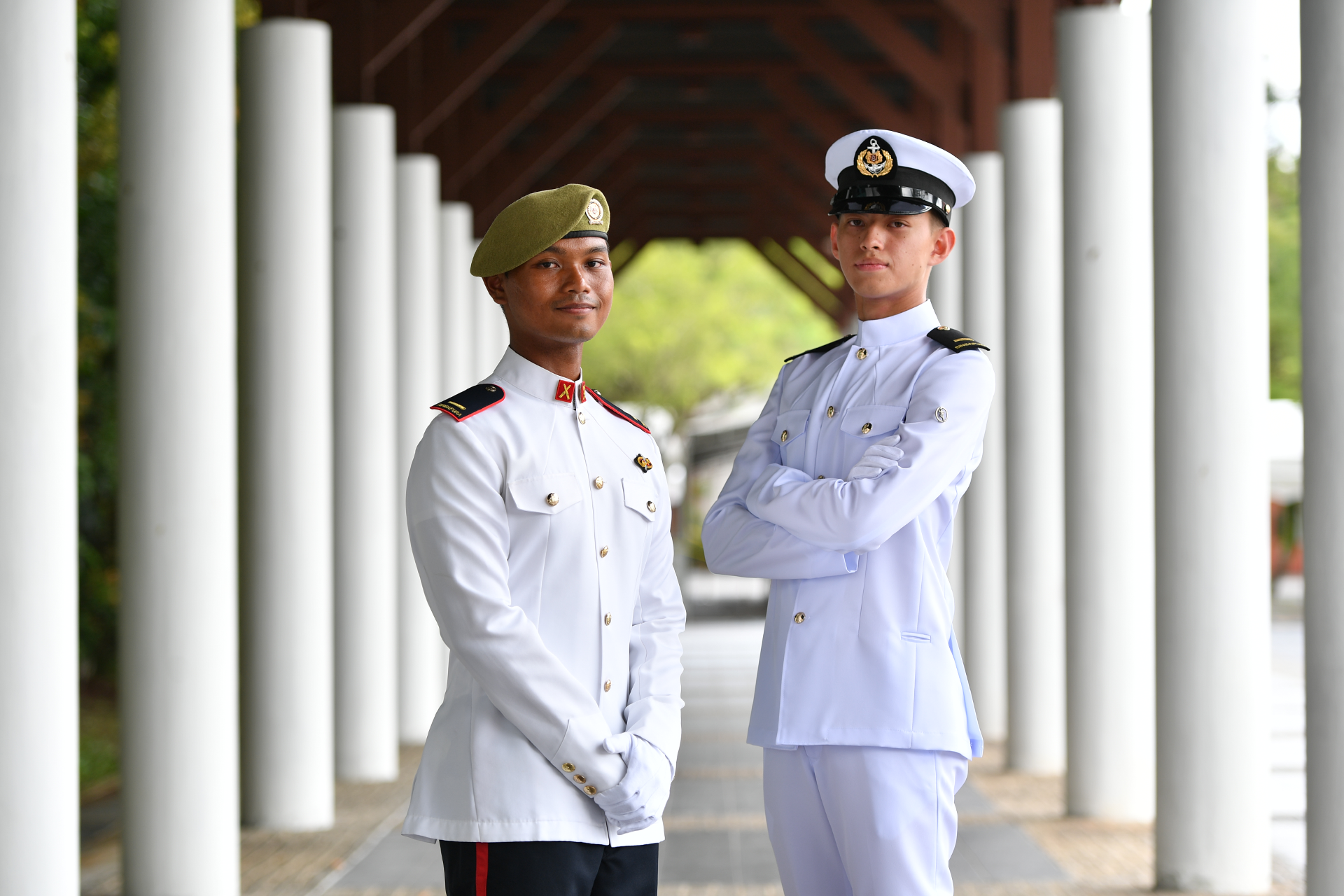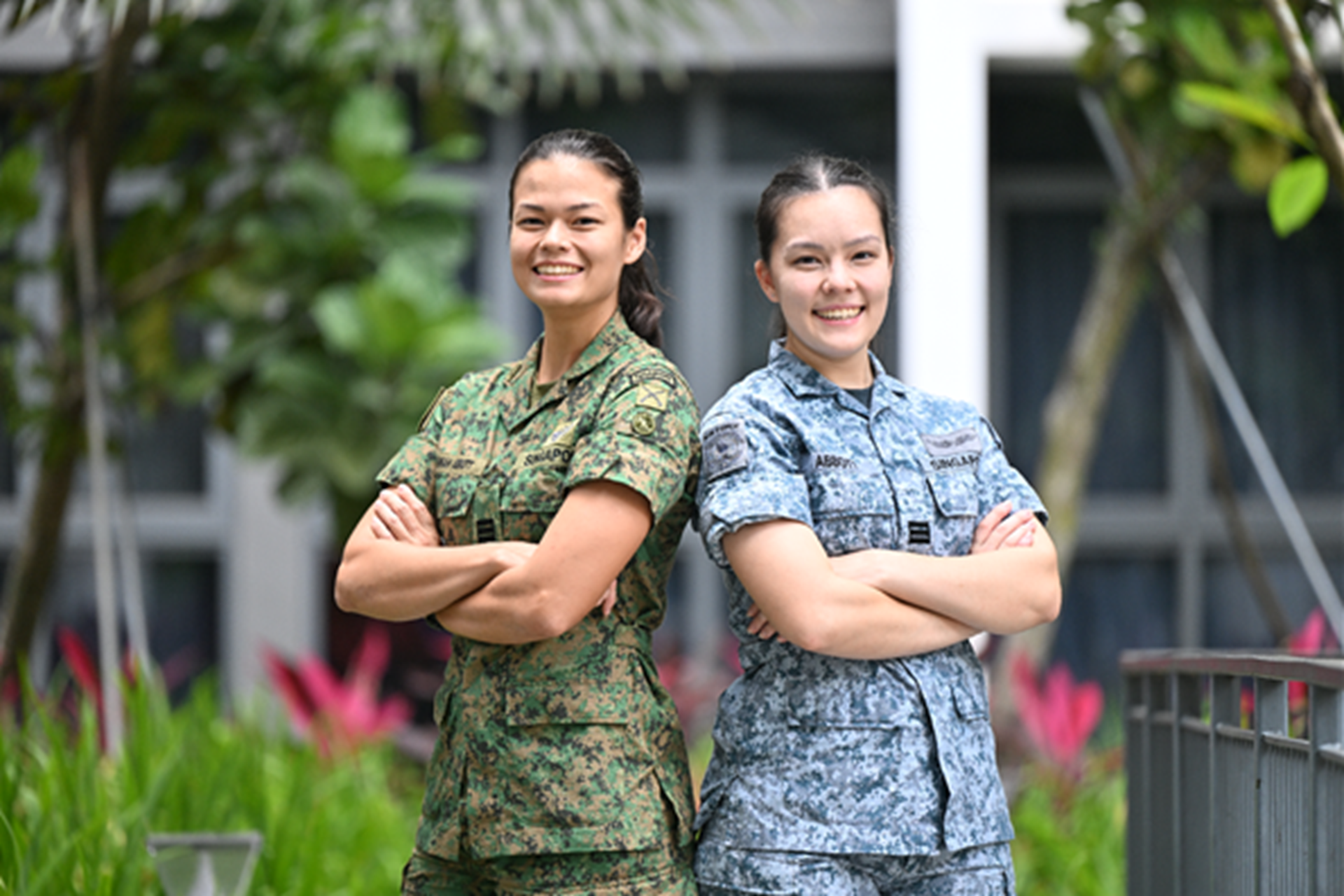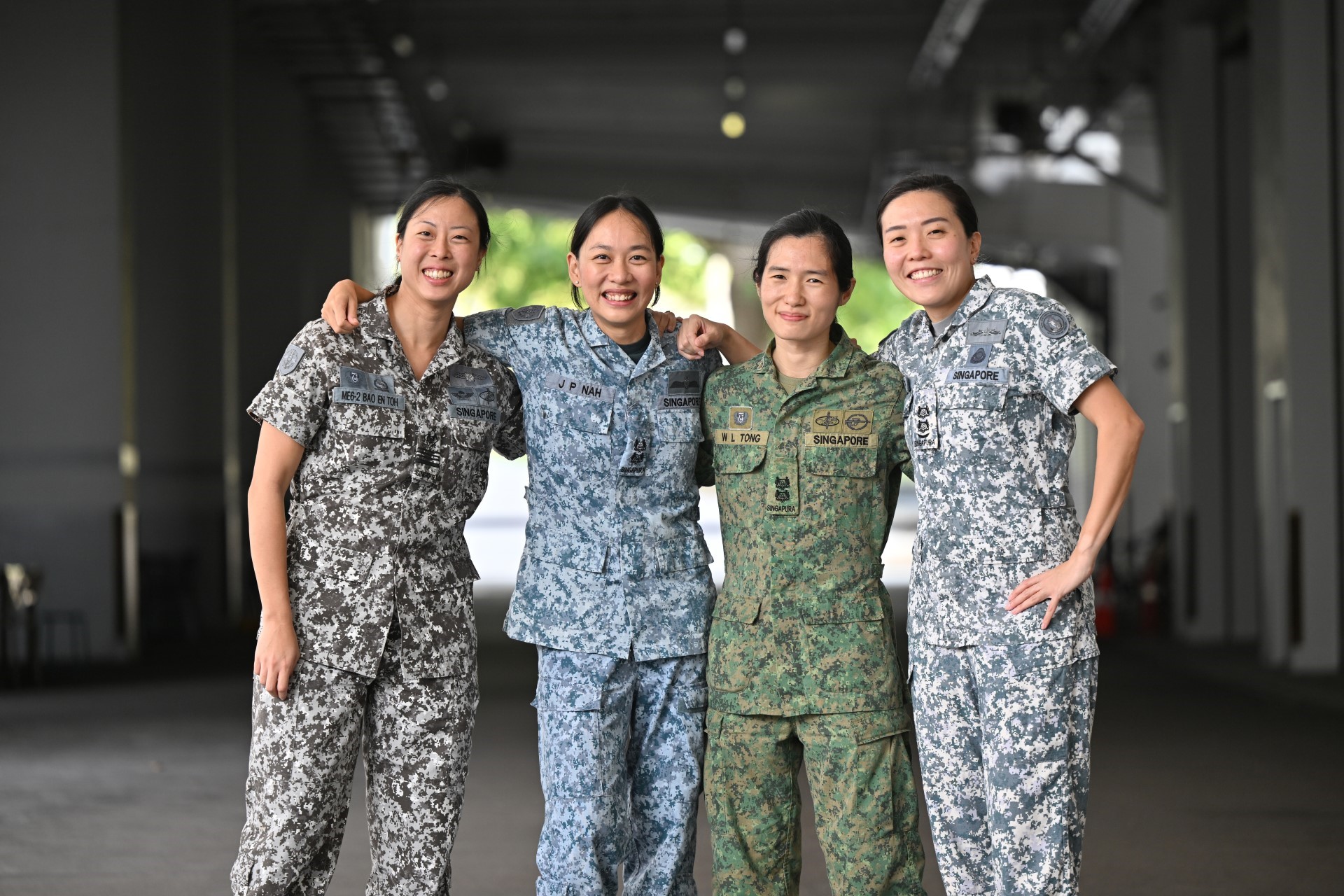INTO THE DEEP
As naval divers, they must meet demanding physical fitness standards, possess incredible mental strength and be like fish in water. PIONEER takes you behind the scenes to catch a glimpse of the Naval Diving Unit's (NDU's) training and operational capabilities.// STORY Teo Jing Ting
// PHOTOS Kenneth Lin
One with the water
Before earning their fins, all trainees go through the Combat Diver Course (CDC). During these 20 weeks, they will undergo rigorous physical training, build water confidence through drown-proofing, learn land combat and specialised diving skills, as well as go through a five-day Team Building Week.
Making it as a team
Done in teams of four, the Maritime Assault Course (MAC) is an annual test which assesses the fitness and operational competencies of naval diver Regulars. Throughout the course, each diver dons a 15kg load comprising a combat vest, life jacket and a Heckler & Koch HK416 assault rifle. The time they have to complete the five-obstacle circuit? 15 minutes.
Stealth attack
To emerge covertly from the sea and attack forces on land requires strong teamwork and coordination, especially under strong tidal conditions. The divers are armed with 22kg of gear and weapons including a load-bearing vest, night vision goggles and the HK416 assault rifle — which increases by a third of its weight when wet.
